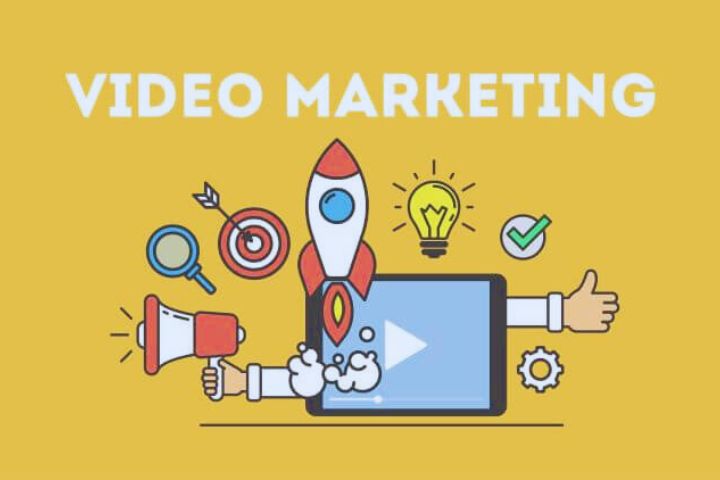Video Marketing Strategies: 3 Types Of Video To Connect With Your Customers

Video marketing Strategies: Video content is attractive, easy to consume and entertaining, which is why it adds great value to digital marketing strategies. To make your video marketing strategy stand out among so much content, we present 3 types of videos to increase engagement.
Companies have been implementing video marketing strategies for years, and it seems that the trend is only growing. 91% of companies utilize video as a marketing strategy; did you know that? Company also found that the vast majority of marketers (96%) consider video an important part of their digital marketing strategy.
The rise of online video platforms has also led to this growth. It is normal that marketing and advertising campaigns have now moved to platforms such as YouTube, Twitch, Instagram or TikTok, which are some of the most popular channels for watching videos.
One of the advantages of content in video format is its ability to capture multiple senses and transmit information more effectively. According to report in English, viewers retain 95% of a message when watching it on video, compared to only 10% when reading it in text.
Whether your business has five employees or 500, a powerful video marketing strategy will increase brand recognition and drive sales. In this post we explain three types of videos that you can design taking into account each moment of the customer journey, as well as the first steps to create a video marketing strategy for your brand.
Table of Contents
Brand Story: Tell a story to increase awareness of your brand
Storytelling or storytelling is a very powerful tool for digital marketing professionals. The brand story helps companies communicate their values while telling a story. Nowadays it is important that brands not only present a product, but also tell a story that manages to connect with the audience’s emotions.
A brand story video is the best way to raise awareness and differentiate yourself from the competition in the industry. Target your videos at potential buyers who haven’t visited your store before or don’t know what makes your business special.
Some of the appropriate channels to present a brand story video are, among others, the home of the website, social media profiles or the YouTube channel, where the video will be pinned in the recent posts area or in the appropriate prominent place.
Product demo: informs and empowers the customer to improve their experience
Gartner (article in English) reports that explainer videos “help attract new customers, engage potential customers, build subscriber loyalty, and generate greater brand engagement.”
Product demos are the most common type of content in business video marketing. This data serves as an important reminder that the digital marketing team’s strategy does not end at the end of the buyer’s journey.
Product demos are a good fit for social media channels like TikTok and YouTube, as well as follow-up emails after a user’s purchase.
Customer testimonial: satisfied customers are brand ambassadors
A customer who has gone through the sales funnel and trusts the product they have or the service they use is a customer who would potentially recommend the brand. Companies can implement a referral marketing strategy when they have limited resources to carry out paid digital marketing actions.
These customers are likely to write a review, recommend your product or service to a friend, or share an invite code to their contacts. But customers can also appear in testimonial videos to speak in first person about the benefits of the product or service.
Showing your customers in a testimonial video positions them as the face of your brand. These types of videos spread easily on social networks, but they are also effective when placed on a landing page, which helps optimize the strategy of creating trust in new and potential customers.
Where to start? Create your video marketing strategy in 5 steps
When creating a video marketing strategy, you probably have many questions: how to create the videos? On which channels to broadcast them? What resources do I need? Below we detail 5 simple steps to create a video marketing strategy from scratch:
-
Define the campaign objectives
What is the goal you want to achieve with the video marketing campaign? You may be looking to increase sales, increase your followers on social networks or you are looking for your target audience to provide you with their email.
Whatever the objective, you must make it clear at the beginning of the strategy, so that subsequent actions make sense. In this way, you will also be able to analyze and measure the results of the campaign based on the objective you set at the beginning.
-
Pose the buyer persona
Spend time creating the profile of the potential customer you are targeting in your video. By knowing the needs and concerns of your audience, it will be easier to decide what type of video you need and you will be able to connect on an emotional level with the audience. In any marketing and communication strategy, this is one of the starting points to generate engagement.
-
Set the main message and video format
Depending on the type of video you’ve chosen (brand story, product demo, or customer testimonial), the main message of the video will vary. Whatever the type of video, the message must be only one and the idea you want to convey must be clear to the audience after viewing.
Once you have decided on the type of video and the main message, you can choose the format of the video. For example, you may be considering making an animated video, or a video in an interview format. You can also make a video using augmented reality or choose a time lapse format. Brainstorm with your team to decide all the aspects that will bring your video to life.
-
Choose the right resources to produce the video
Knowing what resources we have, both human and material, will be key when designing a video marketing strategy according to our possibilities. First of all, you will need equipment to make the video. Depending on your budget, you can purchase a camera that records high-quality images or take the video using a mobile phone.
Next, you will need to choose the ideal tool for editing the video. There are different software on the market for video management, to create and publish videos, and also specific video marketing tools. These tools can be free or paid, and you should review the catalog to decide what features and functions you need to choose the right software.
If your team does not have the necessary knowledge to create and edit the video, you can always use training programs to ensure that the staff is trained to carry out the video marketing strategy.
-
Select the platforms on which you will publish the video
Once the video has been produced and edited, it is time to decide which platforms you will use to broadcast it. Be clear about the stage of the funnel in which the potential audience is located and carry out an analysis of the customer journey to make this decision.
If it is a customer who has already made a purchase, you can share the video in a newsletter through an email marketing platform. If, on the other hand, you want to target people who have not yet interacted with your website, you may prefer to use a social sales strategy to make an ad in which your video will appear to users who do not yet follow you.
Design your video marketing strategy with the customer journey in mind
Video marketing for companies has multiple benefits that help businesses humanize the brand, create creative content and connect with their target audience on an emotional level. This is why it is advisable to carry out a video marketing strategy taking into account the stage of the customer journey in which the audience is.
Using the three types of video that we have presented in the article will help align the message with the audience, so that interest increases and you can achieve your sales goals. The success of a video marketing campaign will depend on the usefulness and relevance of the content to the audience. Sending the right message at the right time can have a positive impact.






